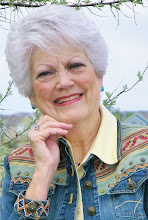The Trickster character offers comic relief in a story. He may be a personality trait of the Hero or other characters. He presents us with mischief and a desire for change. He may cut a few egos down and bring Heroes and audiences down earth.
Some people consider a good story “Makes‘em cry a lot; lets’em laugh a little.” Others think the opposite yields a good story. I think a balance of both creates the best reading.
Sometimes the Trickster serves as the Hero - Bugs Bunny, the Roadrunner, Daffy Duck, Speedy Gonzales, Tweety Bird, Woody Woodpecker to name a few. The Hare in the Tortoise and the Hare shows that a Trickster Hero can turn the tables and actually fail.
Native Americans present Tricksters such as Coyote and Raven. The clown Kachina of the Southwest teaches as well as gives great power and comic relief.
Once in a while the Trickster changes others but not himself such as Eddie Murphy in Beverly Hills Cop. At other times, the Trickster’s job makes us laugh at ourselves.
Now that we have all the character archetypes in a story, authors should be able to add psychological depth and variety to keep from creating stereotypical characters.Remember, archetypes may not be individual characters put traits of various characters.
Next we delve deeper into the Stages of the Journey and see how the archetypes fit in.



